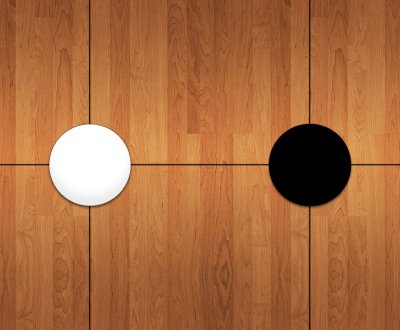Go
Go is a strategy game played by two opponents placing and moving stone tokens on a board. The game was introduced in Japan in the 8th century through trade with China. From an aristocratic activity, it gradually spread into the population and became one of the most popular games in Asia and in the world.
Once the favorite game of Chinese Taoists, the Go was imported from the Asian continent to Japan and gradually settled in the country, although for centuries it has primarily been played only in the aristocracy. The game was indeed a stately occupation: shoguns such as Oda Nobunaga, Toyotomi Hideyoshi and Tokugawa Ieyasu were great players. Nobunaga even funded an annual grant to award the best players. Nowadays, Go players use the transcripts of past centuries’ Go masters’ games to study strategy and improve.
Go equipment and goal
Go is a strategy board game based on a simple idea: the player who succeeds in creating the largest territory by surrounding the adversary’s stones is the winner. First, some basic terminology:
- The board is named goban. It is made of a square of wood on top of flat round legs. A grid is drawn on the board, usually of 19 intersections by 19, which are used to make moves.
- The Go pieces are called stones and come in two colors: Black and White. The stones are put on the intersections on the board, following specific rules to either capture the opponent’s stones or create an impassable territory and score points to win the game. A Go match can be played without removing a stone from the board.
- A territory is won when the opponent cannot enter in it without being captured. This territory is then called "alive".
It is possible to create several groups of stones on the board to try and connect them later in a single territory if the adversary does not prevent such move. That is the idea underlying the game of Go.
Rules
It is quite easy to learn the rules of Go:
- Liberty: when a stone is put on an intersection, it has 4 liberties, namely the four intersections surrounding it.
- Capture: a player’s stone or territory can be captured by occupying all the liberties surrounding them. To achieve this, the opponent (White for example) must be encircled in a territory by Black. When there is only one intersection left to trap White, the situation is called atari. To ensure victory, Black can block the liberties by placing a stone on the intersection in-between them. However, it is necessary only if White can capture one of the liberties by connecting the stones they have on the other side of the territory’s border.
- Creating groups of stones allow to have more liberties and forces the opponent to capture the whole set of stones. The closer the stones are, the more difficult it is to capture them.
- Once a territory is conquered the adversary can’t enter in again to capture stones, even if placing stones where they have 4 liberties. In the same way, it is forbidden to put a white stone if there were none and black stones already surround the area. Even if blocking Black can be made is several moves, if the first move puts White in danger, then the move is forbidden.
- Counting points: the players scoring the most points is the winner. Points are scored by the number of intersections owned by each player in their respective territories.
Practice naturally allows the player to develop their own strategy and improve.
Democratization of Go game
Go game was largely popularized in the 2000s thanks to the manga Hikaru no Go, that tells the story of Hikaru, a young high school student haunted by Sai, the ghost of a Heian period Go master. Abiding to the ghost’s wish to play Go, Hikaru starts to play and becomes a skilled player. The reader or anime watcher learns the rules of Go with Hikaru and enjoys the strategic and psychological aspects of the game. Indeed, as a game can be played without removing a stone from the board, each match can last several hours or on the contrary a few dozen of minutes only, revealing the players’ characters through their choices and ways of playing.
Go events are as important as can be chess tournaments. Nowadays, one of the greatest players in the world, if not the greatest, is South-Korean champion Lee Changho.
At the end of the 1990s, artificial intelligence overturned the world of chess when it won against Garry Kasparov, the champion at the times. While the game of Go was considered even more complex than chess and seemed out of reach for any IA, since 2015, the program AlphaGo can match, and often surpass the best Go players in the world.
Vocabulary

